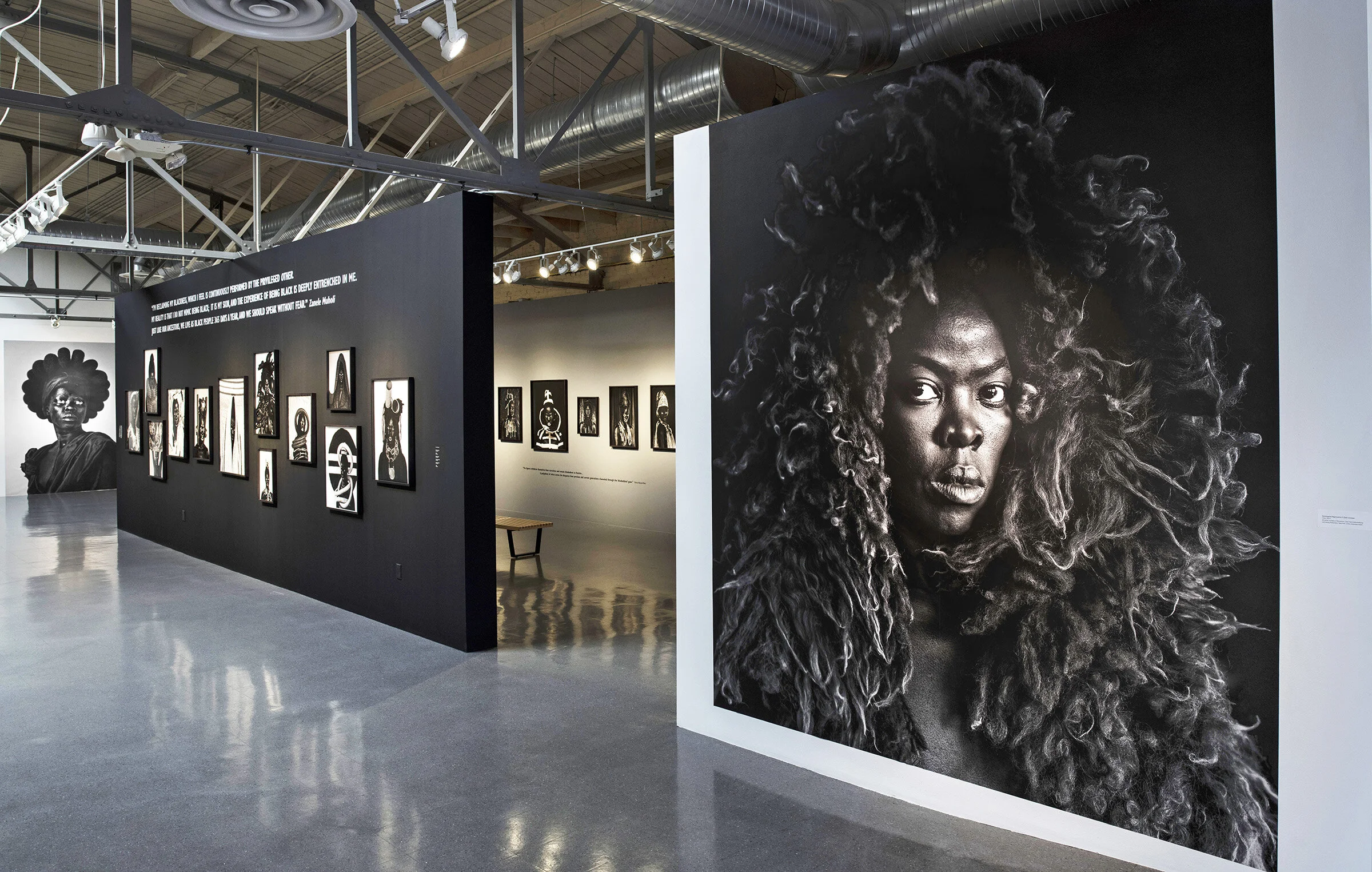Helen & Alice at the Museum
Steven Frost: Helen & Alice at the Museum
Boulder Museum of Contemporary Art
1750 13th Street, Boulder, CO 80302
February 27, 2020-March 15, 2021
Review by Danielle Cunningham
Known for weaving non-traditional materials, fiber artist Steven Frost pushes their material scope to extremes this year with a new monumental installation. This work is the Boulder Museum of Contemporary Art’s (BMoCA’s) newest temporary commission for its InsideOut program and it hangs over the external northwest corner of BMoCA’s building. The woven green-and-white plastic form is sourced from lawn chairs, evoking stereotypical, mid-century images of white American families, and perhaps even generating feelings of nostalgia for a “simpler time.”
Steven Frost’s installation Helen & Alice at the Museum on the exterior of the Boulder Museum of Contemporary Art. Image by DARIA.
Contrasting with this picturesque notion, the work rests against the red brick pattern of BMoCA’s facade to create a nauseating combination of color and geometry. And that’s the point. The clash of the artwork with the building underscores the queer identity of the women to whom Frost pays homage with the work’s title: their aunt, Helen, and her partner, Alice. For them, family life was far from simple.
Historic photographs of Steven Frost’s Aunt Helen and her lawn chairs. Images courtesy of Steven Frost.
Cast to the margins in life, Helen and Alice are now symbolically supported by the museum, which also now supports the weight of their forcibly hidden relationship. We as viewers, too, must carry this weight by using our bodies in an uncomfortable way since viewing the installation forces us to modify our typically forward-looking gaze into a vertebrae-bending position.
The front facade of the Boulder Museum of Contemporary Art with Steven Frost’s installation Helen & Alice at the Museum on the exterior. Image by DARIA.
Though placed at an uncomfortable height, and crafted using unattractive colors, the installation is almost impossible to miss. Thus, Alice and Helen’s once hidden, natural existence now sits in a prominent, unavoidable position. Not only that, but they are memorialized in the lasting medium of plastic, with pieces bound together using plain weave—a technique that is among the strongest types of weaving. Whether or not Frost intended to connect Alice and Helen’s story to a durable weaving method, the allusion to strength is invaluable at a time when American politics continues to destabilize same-sex relationships.
While Frost’s installation is temporary, the artist will commemorate this work as well as Alice and Helen’s lives via tote bags they will create from the installation materials once the commission ends. Originating as lawn chairs, existing now as an art object, and soon becoming functional objects, Frost’s work not only underscores their aunt’s relationship but also emphasizes the imaginative possibility and utmost necessity of reusing materials in an era of planned obsolescence. In many ways, Frost illustrates that like their materials and their subjects, history has more than one narrative, and art doesn’t have to live on gallery walls and floors or be made from predictable color palettes and traditional materials. Sometimes, that which is difficult, perhaps as hard as plastic, reveals fragile feelings and soft stories that we never knew existed.
Danielle Cunningham is a mentally ill artist, scholar, and independent curator living in Denver, CO. Influenced by mysticism and science fiction/fantasy imagery, she creates art that re-contextualizes science fiction tropes and subverts mainstream ideas of gender, sexuality, and (dis)ability. Her practice lies in DIY/punk and Marxist feminist methodologies, because of which she typically pursues collaborations. As a member of Hexus, an intersectional, (dis)abled feminist collective, Danielle has curated exhibitions and created performances and installations using Magick to make visible and de-stigmatize mental illness. Since 2018, Danielle has studied Art History and Museum Studies at the University of Denver, where she was awarded a Graduate Teaching Assistantship at Vicki Myhren Gallery. She is currently making work for an exhibition with painter Julio Alejandro exploring the relationship between capitalism and racism in American professional athletics.











